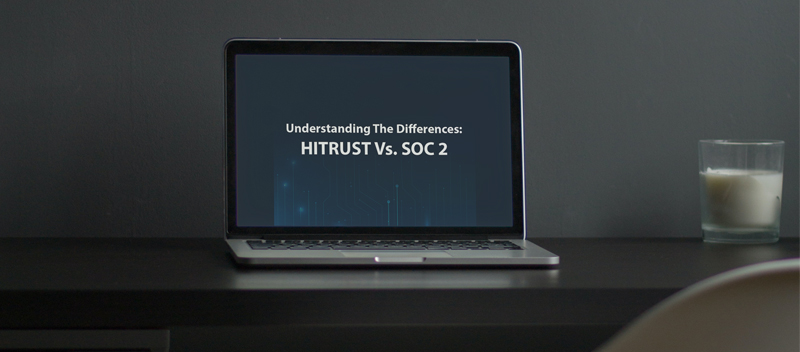Understanding The Differences: HITRUST Vs. SOC 2 – Which Is Right For Your Organization?

This article will unpack these two leading security frameworks, helping you determine which best suits your company’s unique needs.
Understanding SOC 2 and HITRUST Certifications
SOC 2 and HITRUST are vital to demonstrating your commitment to protective practices, but understanding their distinctions is crucial to aligning with your company’s needs.
What are the Main Functionalities of SOC 2 and HITRUST?
SOC 2 and HITRUST bolster trust in an organization’s systems by ensuring strict data protection measures are in place. SOC 2 focuses on a business’s oversight of its information to guarantee security, availability, processing integrity, confidentiality, and privacy.
Meanwhile, HITRUST offers security benefits for healthcare providers and organizations and provides cohesive cybersecurity frameworks for non-healthcare providers. HITRUST combines requirements from different industry standards, such as ISO/IEC 27001, GDPR, and PCI-DSS, into a single framework, simplifying compliance efforts and ensuring a comprehensive approach to security.
Both certifications necessitate a detailed third-party audit to verify compliance with specific frameworks essential for SOC 2 or HITRUST certification. Although different, both are key for data security management and compliance.
Who Performs the Certification?
To get a HITRUST certification, your company must work with an assessor that HITRUST has approved. These assessors are experts in the Common Security Framework (CSF) and can evaluate whether companies handle sensitive information appropriately. They review your data privacy practices and ensure strict security standards are met.
On the other hand, CPAs, or Certified Public Accountants, give out SOC 2 reports. These professionals specialize in auditing companies to see if they follow SOC 2’s guidelines for handling customer data. You can only claim SOC 2 compliance after a CPA verifies that your practices meet the audit requirements of the American Institute of CPAs (AICPA).
For more on our cybersecurity and compliance services Click Here
The Key Differences Between SOC 2 and HITRUST Certifications
Let’s delve into the nitty-gritty and compare SOC 2 and HITRUST side by side to see how they compare. This comparative deep dive will spell out the key distinctions, helping you decode which framework best aligns with your organization’s unique needs.
SOC 2 Certification
SOC 2 certification signifies a company’s commitment to top-tier information security, going beyond basic checks to provide a comprehensive evaluation of how customer data is managed and protected. To achieve this, organizations must meet stringent standards across five Trust Service Criteria: security, availability, processing integrity, confidentiality, and privacy, which are essential for those handling customer data on the cloud.
This certification demonstrates a dedication to extensive compliance efforts and underscores a business’s promise to safeguard sensitive information. Particularly relevant for technology-focused entities like data centers and cloud services, SOC 2 covers a wide range of organizational controls over system and data management processes, showcasing an operation’s ability to exceed mere compliance.
HITRUST Certification
HITRUST certification represents a high level of trust and security, particularly for the healthcare industry, highlighting an organization’s dedication to risk management and protecting sensitive health data. Achieving this certification involves a thorough process guided by the HITRUST CSF, which integrates a variety of security controls to meet diverse regulatory demands.
Distinguished from mere frameworks, HITRUST provides a certifiable standard, with organizations undergoing detailed assessments by approved CSF Assessors. While the investment required for HITRUST certification may vary, it yields substantial rewards in compliance assurance and an improved reputation among stakeholders.
Choosing the Proper Certification
Choosing the proper certification between HITRUST and SOC 2 hinges on industry-specific requirements and an organization’s unique data environment.
However, if your organization provides services to healthcare entities or handles their data, such as software vendors or cloud providers, it is crucial to demonstrate your commitment to security and compliance by obtaining HITRUST certification.
Each certification offers different benefits, but getting certified could enhance your reputation for solid risk management practices, helping attract new customers looking for trustworthy partners with robust audit processes.
Conclusion
Understanding whether HITRUST or SOC 2 aligns with your organization’s needs is crucial in data security and compliance. Weighing factors like industry requirements and budget constraints helps clarify this decision.
Remember that both frameworks enhance your cybersecurity posture and establish trust with clients. Make a well-informed choice that supports your long-term compliance objectives and fortifies your information security strategies.




